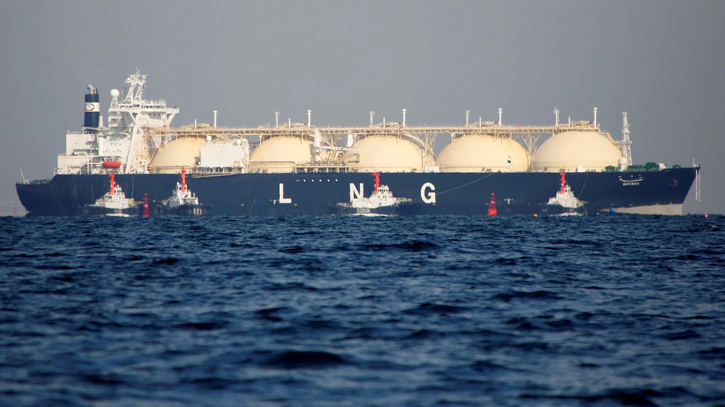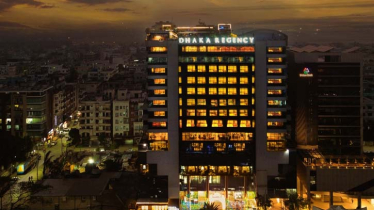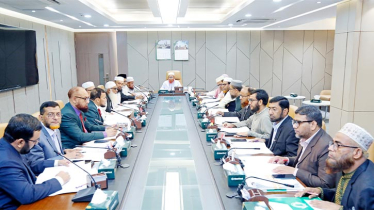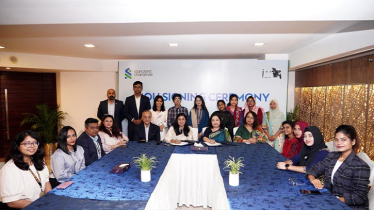
Photo: Collected
After importing fuel oil and electricity, Bangladesh is now preparing to import RLNG (Regasified Liquefied Natural Gas) from India through pipelines, a development that has raised concerns among experts.
Two Indian energy companies have already signed agreements with Bangladesh, and these projects are expected to become operational in the next few years. The plan involves laying two separate pipelines spanning 265 kilometers to facilitate the import of gas.
Despite Bangladesh having two LNG terminals in Moheshkhali with a total capacity of 1,100 mmcfd (million cubic feet per day), the new initiative will involve importing RLNG from international suppliers to India, where it will be regasified before being transported to Bangladesh through pipelines.
According to plan, Moheshkhali Island will be the energy hub with a deep-sea port where giant ships are anchoring with coal for the Matarbari coal-based power plant.
The MLNG terminal enables Petrobangla to procure LNG from international gas markets which will further complement and enhance Bangladesh’s ability to reliably use the country’s domestic natural gas reserves. Expanding access to diverse and abundant sources of natural gas supply will allow local communities to flourish and provide a net economic benefit for the Bangladesh economic growth engine for years to come.
India's H-Energy is set to sign a deal with Bangladesh's state-owned oil, gas and mineral corporation Petrobangla, while GAIL is finalising a re-gasified LNG sales agreement with private Bangladeshi firm Dipon Gas Company.
Zanendra Nath sarkar, Petrobangla Chairman told the daily Messenger “Re-gasified LNG from H-Energy will mainly be used for a 22-year period to feed the 800MW Rupsha combined-cycle power plant, owned by the state-run North West Power Generation Company.”
GAIL will supply the gas to Jashore district in southwestern Bangladesh. The gas will be delivered through a 110 km cross-border pipeline constructed from the Benapole border.
GAIL will build the Indian segment of the pipeline, while Bangladesh's Dipon Gas will construct the Bangladeshi stretch. Dipon Gas and GAIL have not yet finalised the benchmark for setting RLNG prices.
The plan shows about 29,300 MW from gas and LNG by 2041. Petrobangla hopes, RLNG from H-Energy will be added in the grid by 2027.
For the project Bangladesh will receive loan from Asian Development Bank (ADB) around $600 million, while the Islamic Development Bank (IsDB) is contributing around $200 million to the Rupsha power plant project, which features two 400 MW gas-fired units. The government intends to cover the remaining $150 million.
However, Bangladesh wants to import 9,000 MW of electricity from neighbouring India by 2050. The process to import hydro-electricity from Bhutan has advanced too through India.
The government has made a master plan for 2050 estimating $300 billion focusing LNG import and set a goal to achieve 8.6 percent of GDP growth though the experts consider the master plan as an imprudent plan.
Experts think, currently, the government is suffering for paying outstandings against imported fuels, moreover, globally fossil fuel has created severe crisis that has increased the price as well. So, in this situation, this import-based plan will make the economy vulnerable more.
According to plan, in 2041, the demand for electricity has been estimated at 50,364 MW. Against this demand, the production capacity has been asked to be increased by 74,300 MW, which is 47 percent more than the demand.
Messenger/Fameema








